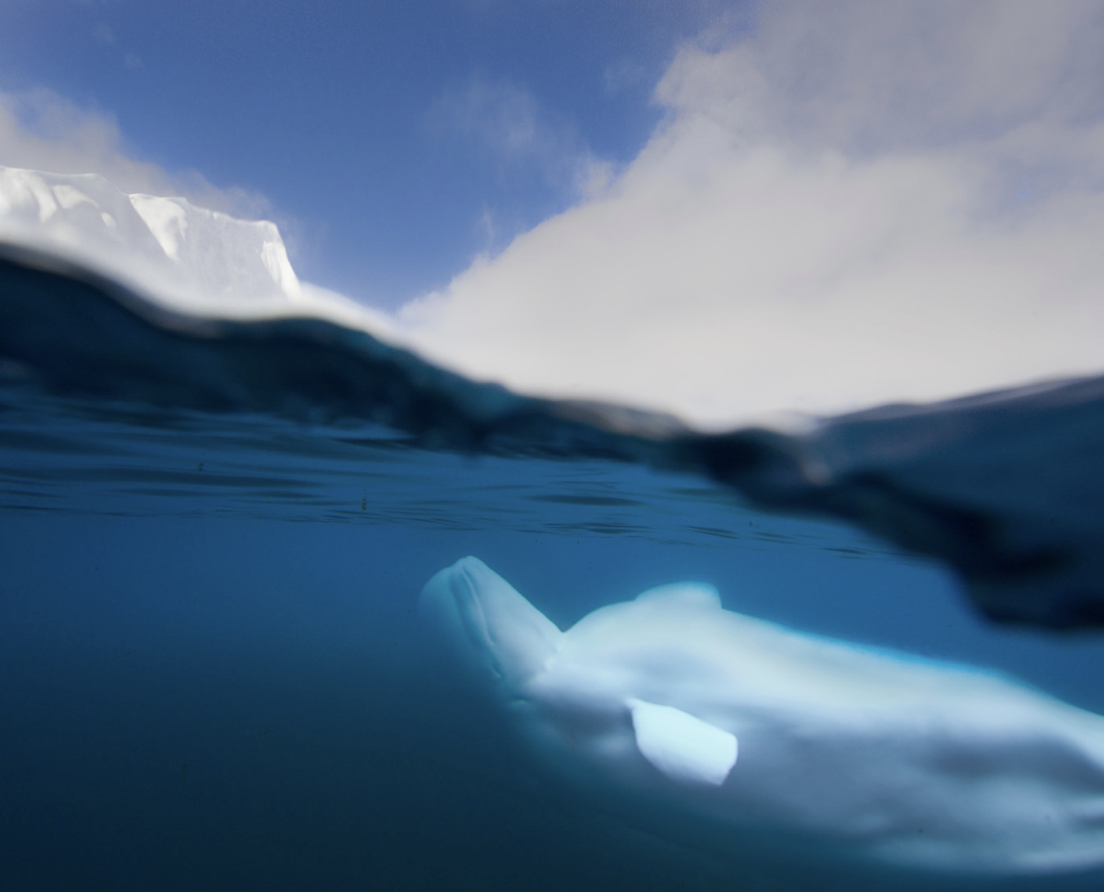Species in Peril:
BELUGA WHALE

The phantoms of the Sea
They are indeed whales
Although the Beluga whale can also be found in subarctic regions, these whales are frequently seen in the coastal seas of the Arctic Ocean. When the sea in the Arctic freezes over, beluga whales travel south in large herds. Animals caught by Arctic ice frequently perish and become food for polar bears, killer whales, and people living in the region. Native North Americans hunt them, as do commercial fisheries, which have nearly wiped out some populations, such those in the Gulf of St. Lawrence. Fish, crustaceans, and worms are the main foods for beluga.
The Beluga whale is linked to the narwhal, a tusked “unicorn” whale. The same-named sturgeon, which has been widely fished for its famed caviar, is not related to the beluga.
Canaries of the Sea
Because the Beluga whale is a sociable creature, they typically move in tiny pods. However, there are records of pods with over a thousand members. There doesn’t appear to be a set structure for the pods. Individuals frequently switch between pods. Male adults frequently wander in groups, whereas females and young females typically establish their own pods.
Belugas frequently surface simultaneously tow breathe when traveling in pods. In order to breathe, belugas also use a breathing method known as “snorkeling,” in which only their blowhole breaches the surface. Only 4–7% of their time is spent at the surface. Beluga whales have sensitive hearing and well-developed echolocation capabilities. They also make a larger range of sounds than any other marine mammals. Their vocalizations include grunts, clicks, chirps, and whistles. to communicate, which is why they are often called “canaries of the sea”.
Distinctive feeding habits
In general, beluga whales are thought of as opportunistic feeders. Fish species include herring, capelin, smelt, cod, salmon, flatfish, sculpin, lingcod, and eulachon make up a sizable portion of their diet. Additionally, octopus, squid, shrimp, crab, clams, mussels, snails, and sandworms will be eaten by them.
Feeding takes place at river mouths, nearshore estuaries, and over the continental shelf. Most feeding dives are 2–5 minutes long and relatively shallow. Belugas can dive down to depths greater than 2800 feet, though. Belugas forage beneath sea ice that may cover 90–100% of the surface in the northernmost part of their range. They have been observed to travel up to 430 miles from open water under the ice.
A Few More Facts About Beluga whales
- Threats to beluga whales include climate change, hunting, oil and gas development, and industrial and urban pollution. Polar bears and killer whales are known predators of belugas throughout their Arctic range
- Beluga whales’ dives may last up to 25 minutes and can reach depths of 800 meters.
- The beluga is able to swim backwards.
- Beluga whales’ dives may last up to 25 minutes and can reach depths of 800 meters.
- The vertebrae in a beluga’s neck is not fused together, giving it the unusual ability to turn its head up, down and side-to-side.
- The beluga is closely related to the narwhal; they are the only two members of the Monodontidae family
- The word beluga comes from the Russian word “bielo” meaning white. However, these white whales are born dark gray. It can take up to eight years before they turn completely white
Watch this video on beluga whales
Species Name
Delphinapterus leucas
Estimated Population
around 100,000
Conservation Status
Least concern but climate change may impact their numbers
Range
Subartic areas in Northern Hempsihere
Reasons for Population Decline
Climate change hunting interaction with fisheries stranding entrapment in sea ice underwater noise pollution man-made contaminants |


